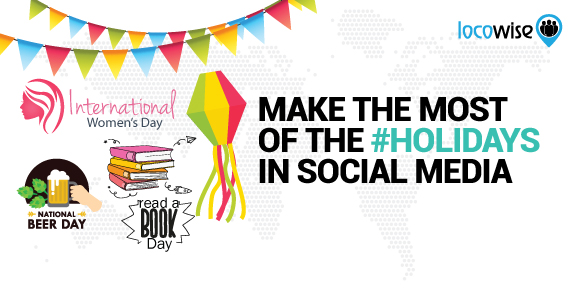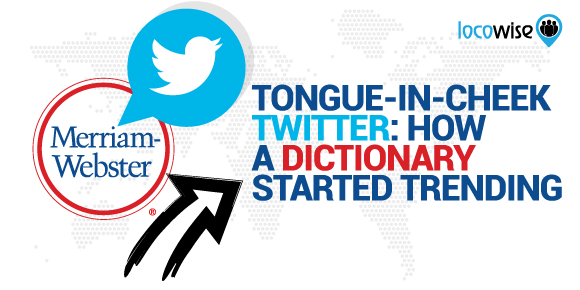What Makes Content Go Viral? We Give You Insights From The Industry Experts
Sahail Ashraf posted on 20 June 2017
Viral content can be described as any piece of media that suddenly becomes an online sensation.
We’ve all seen one, but the million dollar question is do we know how to create one.
Creating content that travels virally is no easy task. Many would deem it impossible.
Is this true? Eleven industry experts weigh in.

Chris Allen, Blogger/Founder, Firmtree
How can someone create content that has the potential to go viral? “Marketers should include imagery that aligns with content and is very shareable. Ensure it’s sized appropriately for open graph mark-up in Facebook and Twitter. Catchy headlines are a must and topics that are controversial, humorous and frightening work well.”
Chris’ top tip? “Give something useful away for free. Examples include a scripted Excel doc, or a business card template.”
Stephen Seifert, SEO Manager, Day Translations Inc.
What’s your experience with content and getting it to go viral? “We had a very viral piece of content about what language the Minions are actually speaking. It is currently still on page one of Google SERP and still driving a lot of traffic to our site.”
How did it achieve this result? “The recipe for viral content is actually a three-part mixture. Part one, a viral moment in time. For us this was the Minions movie. Part two, powerful keywords around the topic. Here we used Minions, language, French, Spanish, etc. Part three, highly informative, compelling content. Mix well, and you have a viral success!”
Stephen’s top tip? “One of the best ways to begin your viral content search is to check out what’s trending in your niche, or a niche that can be easily paired with yours. Google Trends is great for this. For us, the Minions language was the perfect pairing. Everyone loved those little babbling cartoon icons, and everyone wanted to know, “What language are they speaking?”. Keywords, great content, and solid on page SEO practices are also a fantastic way to sweeten the deal to get your content on page one, and in front of other big publications that will use their article in their news broadcast, in their own post, or mention it on social networks.”

Reece Epstein, CEO, Reputation Elevation
What makes content go viral? “The first step to making content go viral is to see what has already gone viral. On Facebook Ads, ask viewers to recommend friends who would “love” the post, in a comment. If your content is good, and you’re paying to promote your ads to the right audience, you will get plenty of comments. Then, reply to each comment saying “thank you.” In the e-commerce space, we have seen this generate tens of thousands of comments.”
Reece’s top tip? “Use a slideshow video for your post or ad, because slideshow videos get lots of attention without requiring the budget and time necessary to create a video.”
Debbie Cohen-Abravanel, CMO, Foldimate
‘We released our website and video last June. The video went viral. It has been copied, edited and translated so many times it has hundreds of millions of views, and even now, when we post it on our Facebook page, it gets tons of shares and likes.”
Why did this content go viral? “Firstly, the video is very professional and second, everyone can relate to it. The majority of people have loads of laundry and hate folding it. It is a dream to have a machine that can take some of this burden away from you.”
Teresa Walsh, Marketing Executive, Cazana
What makes content go viral? “Clickbait content [creating shareable, interesting and unique content].”
Teresa’s top tip? “Don’t just look at your competitors’ content and duplicate, make your own unique content that will appeal to not only your customers but to bloggers and journalists as well. Make your titles intriguing and the content itself readable, and always include some sort of multimedia to back it up.”
Aaron Watts, Digital Marketing Executive, DuoCall
How can someone create content that has the potential to go viral? “For me the best way to get your content shared (and hopefully viral) is to get others involved in its creation. By utilising external resources and other people you can create a piece of content in which more than you, the author, has a vested interest. By having a network of others who have a stake in the content then you increase the chances of social shares. These contributors’ followers will then be a new audience for your content. This method works particularly well if you chose the right people to contribute to your piece.”
Aaron’s top tip? Try and find people who are held in high regard within their industry and that have a large social following.

Tom Smith, Principal Consultant, Insights from Analytics
What makes content go viral? “People and an emotional (sad, funny, inspirational) story that reaches, and is shared by, the third level”
What is the “third level”? “The “first level” is composed of people we are connected to, or who follow us, on any social media channel. The “second level” is composed of people who follow, or are connected to, the “first level”. “The “third level” are those people with which we have no direct contact but are connected to the “second level.” If you can create a piece of content that reaches the “third level” you will have created viral content.”
Tom’s top tip? “It’s much easier said than done. A/B test subject lines and formats if you have a powerful, emotional story to see what gives you the greatest chance at producing viral content.”
Simon Ensor, Managing Director, Yellowball
What makes content go viral? “By its very nature, content must be shared. It is critical that content is picked up by those outside of the immediate network and shared to their network, thereby somewhat working by the 6 degrees of separation rule. Content that goes viral will have, at some point and preferably early in its growth stage, significant social influencers sharing the content. This essentially turbo charges reach and enables the content to go viral.
Interestingly a lot of brand led viral videos have significant advertising budgets placed behind them. As such, whilst they may appear to ‘go viral’ they are actually more akin to a traditional advertising campaign!”

Katie Derrick, Content Marketer, giffgaff
How can someone create content that has the potential to go viral? “Make your content niche with a hard-hitting statistic. Crafting crisp, concise content is one thing, but setting it apart from the crowd is another. Featuring a statistic in your content does the job perfectly; it not only proves you have done your research, but provides readers with real, credible and memorable information on your topic of choice.
Our campaign on the increase of data usage, which is set to rise by 720% in the next five years, went viral online thanks to the original statistic we provided. This campaign was then published by the likes of Huffington Post, Latest Today News, Tech Review Daily and Blu Digital, to name a few.”
How did it achieve such great results? “Because content is about providing fast answers to common queries, and we did just that. Including a hefty statistic that supports your content provides opportunity for content to be shared over and over again. It opens your content up to multiple online platforms.”
Katie’s top tip? “Research FAQ’s before building your content. This ensures you are answering common queries surrounding topics relevant to your industry or brand.”
James Nuttall, Content Specialist, the London School of Make-up
How can someone create content that has the potential to go viral? “Create newsworthy content that is relevant to your industry – other publications and writers are more likely to cite your content as a source of information if it is feasible that you have an expert insight into the subject.”
James’ top tip? “A proven way of taking your content viral is to source quotes for your work from experts in the field you are writing about. For example, recently we published our forecast of must-try makeup trends for summer 2017. The London School of Make-Up is an obvious company to have an insight into this topic; however, by featuring quotes from the likes of Elton John’s makeup artist, our article was shared across industry forums that included as many as 18-thousand professional makeup artists.”
Maggie Aland, Marketing Staff Writer, Fit Small Business
How can someone create content that has the potential to go viral? “If you want your content to go viral, ride the wave of a trending meme. This can be tricky because these things happen quickly, and you need to get your content out there fast if you want it to get any traction. Otherwise it will be yesterday’s news.
Maggie’s top tip? The way to catch a topic while it’s still hot is to pay close attention to your Twitter news feed and by looking at what’s currently trending. If you see a meme that is appearing often, think of how you can creatively link it to your business. Make sure that you understand why the meme is funny so that you can accurately recreate it.”






